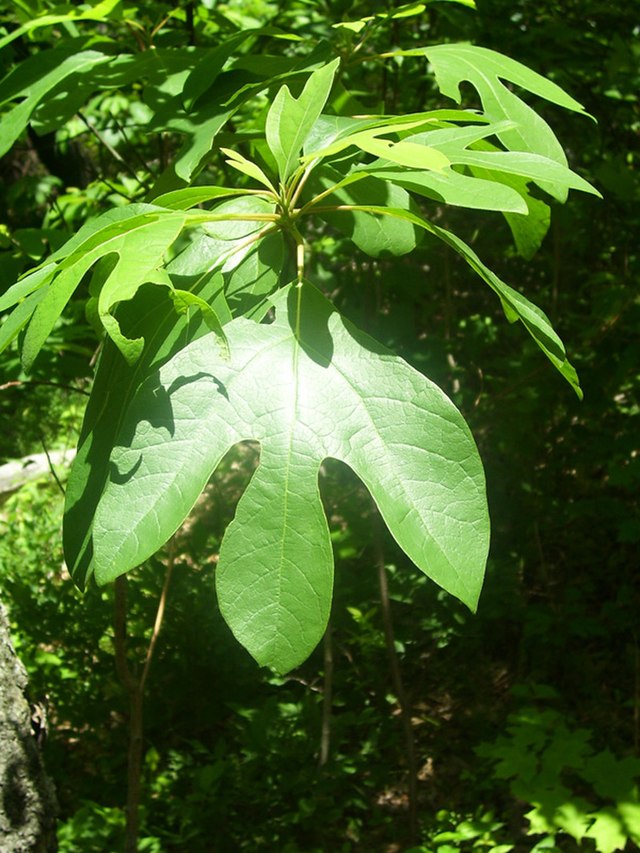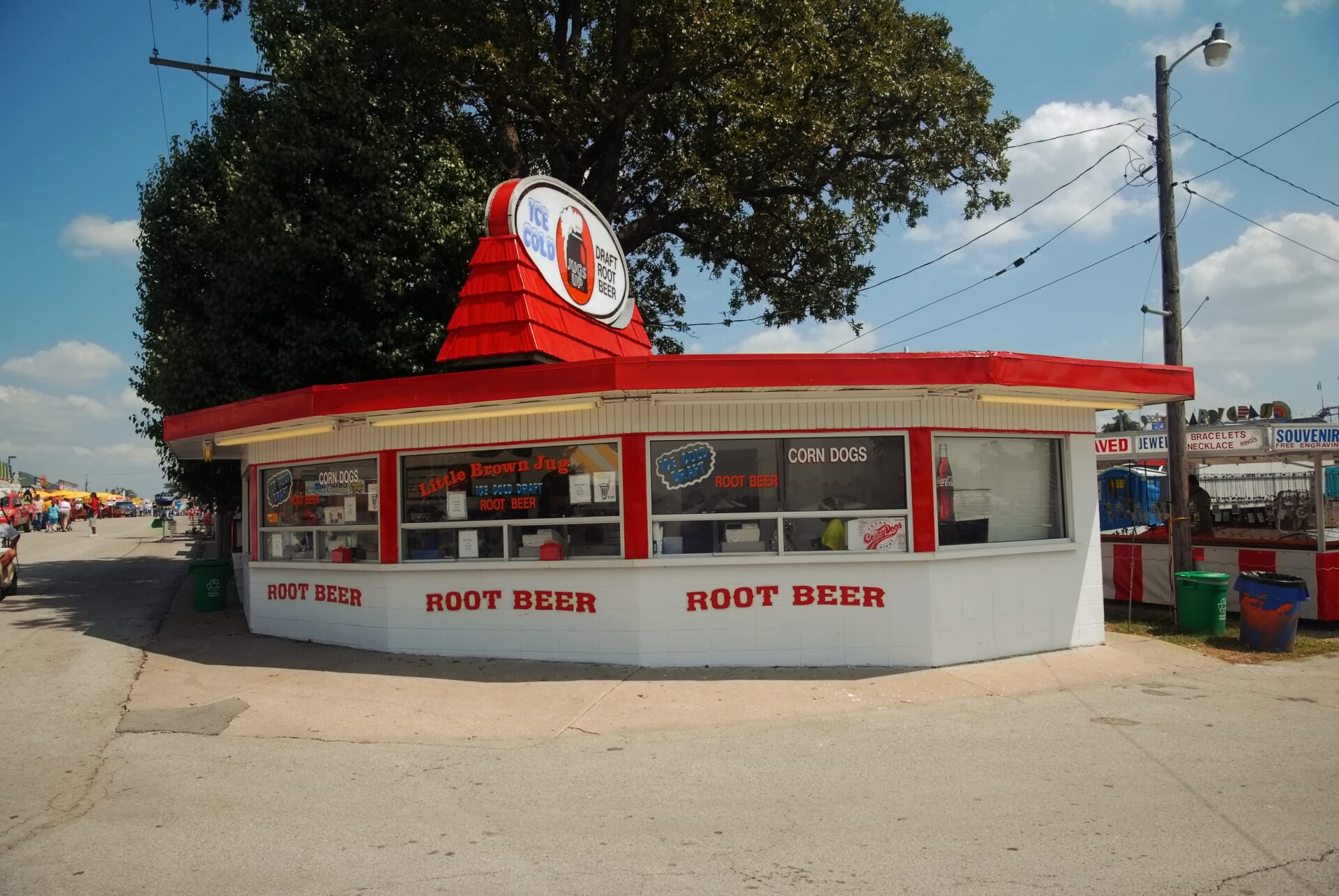When it comes to traditional soft drinks or non-alcoholic beverages, it doesn’t get much more American than root beer.
As American as mom’s apple pie or Sunday football in the park, traditional root beers can actually trace their roots back to the early 19th Century and our founding forefathers. (Even Thomas Jefferson and George Washington were known to have their favorite root beer recipes.)
With its rich and frothy appearance, root beer has captured the hearts and taste buds of many carbonated beverage enthusiasts over the years. Its distinct flavor profile and nostalgic charm have made it a beloved classic in the realm of soft drinks.
In recent years, root beer has grown in popularity across North America. Many of the tap rooms of craft breweries carry root beer as a non-alcoholic alternative for some of its younger customers, i.e., the kids of beer lovers on a Summer afternoon, and a growing number of craft brewers have even started brewing their own non-alcoholic root beers.
Not wishing to miss out, some of the major brewers of the US have also started brewing their own variants of alcoholic or hard root beers, including offerings from companies such as AB-InBev and Molson Coors.
Recent reports by leading marketing analysts Grand View Research, Inc even suggest the global root beer market is set to reach $1.09 billion by 2030, showing an annual growth rate of 4.6%.
But what does root beer taste like? Do you remember the flavor of root beer from being a kid? I have many fond memories of the root beer float, an after-dinner treat on Sunday drive-bys of the A & W roadside diners, or even the McDonald’s root beer they all used to serve. But then root beer seemed to just disappear from my life as I discovered regular beers.
Let’s take a look at the history of root beer and refamiliarize ourselves with the unique flavor of this delicious All-American beverage. Is modern-day root beer still as good or even better than we remember?
The Origins and Ingredients of Root Beer

Root beer’s story dates back to the early 19th century in North America, when it emerged as a medicinal beverage.
Root beer is thought to derive from the “small beers,” beverages both non-alcoholic and alcoholic, made with herbs, berries, and bark.
It’s thought that when the early American colonists arrived, they began to make small beers using whatever ingredients they could find due to not having any barley to make traditional brews. Small beers were considered safer to drink than the water of the time, as boiling the water and ingredients would kill any harmful germs.

The earliest iterations of root beer were often homemade concoctions crafted with a variety of herbs, roots, and barks. These ingredients were believed to possess medicinal properties and were used to treat various ailments. Sassafras root bark, in particular, played a significant role in the original recipes, imparting a distinct flavor to the brew.
A closer root beer recipe to what we now call root beer became popular in the 1870s when pharmacist Charles Elmer Hires developed a miracle cure-all beverage which he initially sold as a syrup containing various medicinal herbs. Resembling a cough medicine, the syrup tasted sweet but not bitter, similar to many modern-day cough syrups.
Soon Hires turned his cure-all syrup into two different forms. The first of which was a dry powder sachet which required the drug to be brewed similarly to how you brew a pot or cup of tea. Hence the name “root tea” was born.

But Charles Elmer Hires was a canny businessman too and knew the term “root tea” was never going appeal to many of his more working-class customers, especially the local coal miners of Pennsylvania.
Hires’ first commercial version of root beer using his famous root beer extract was bottled in 1886 and, by 1893, was widely distributed across the United States.
The key ingredient of Hires’ Root Beer was the root bark of the sassafras tree, although not all traditional root beers were sassafras based. One of Hires’ earliest competitors, Barq’s, sold a sarsaparilla plant-based root beer simply called Barq’s Root Beer.
In 1919, perhaps the best known of all the original root beers, A & W Root Beer, was born when Roy Allen opened a root beer stand in Loid, California. This would lead to the development of the root beer brand and a chain of stands/diners. One of Allen’s early innovations was serving his homemade root beer drinks in cold, frosted mugs.

Sassafras and Root Beer
With its aromatic and flavorful qualities, Sassafras became synonymous with root beer. However, in the 1960s, the FDA banned the use of sassafras root bark in food and beverages due to concerns regarding its primary component, safrole, which was found to be potentially carcinogenic and cause cancer in rats.
As a result, commercial root beer manufacturers had to find alternative ways to replicate the flavor of sassafras in the taste of root beer.

Modern root beers utilize a combination of artificial flavors, such as sassafras flavoring or sarsaparilla extract, to recreate the nostalgic taste of traditional root beer.
Sarsaparilla, a vine-like plant native to Central and South America, has long been used as a medicinal ingredient and flavoring agent. It contributes to the complex flavor profile of root beer, adding a slightly sweet, earthy, and herbal note.
In addition to sarsaparilla and artificial flavorings, another key ingredient in root beer is wintergreen. Wintergreen leaves contain methyl salicylate, which imparts a minty and slightly sweet flavor to the beverage. (Wintergreen is often found in mouthwashes causing many people to compare the flavor of some root beer with toothpaste!)
To enhance the sweetness, traditional root beer recipes often included the use of sugar or molasses. High-fructose corn syrup has become a common alternative sweetener in commercial root beers, providing the desired level of sweetness and contributing to the overall flavor profile.
Apart from the primary ingredients, a variety of spices are used to add complexity and depth to root beer’s taste. Commonly included spices include anise, clove, cinnamon, nutmeg, and allspice. These spices work together in harmony, offering a symphony of flavors that intertwine with the sweetness and herbal notes. The specific combination and proportions of spices can vary, allowing each root beer brand to develop its unique flavor profile.
Craft root beers have gained popularity in recent years, with many brewers experimenting with alternative ingredients and techniques to create distinctive flavors.
Some craft root beers incorporate ingredients like birch bark, ginger, licorice root, or even hops, expanding the possibilities and adding further layers of complexity to the traditional beverage.
What Does Root Beer Actually Taste Like?

Perhaps the defining characteristic of root beer is its sweet and creamy base. The combination of sweetness and creaminess creates a delightful and indulgent sensation on the palate.
The sweetness in root beer is typically achieved through the addition of sugar or high-fructose corn syrup. These sweeteners provide the desired sweetness level, balancing the beverage’s herbal and spiced flavors. The amount of sweetness can vary among different brands and recipes, allowing for a range of flavor profiles to cater to diverse preferences.
In addition to traditional sweeteners, craft root beers often experiment with alternative natural sweeteners, such as honey, maple syrup, or molasses. These ingredients not only add sweetness but also introduce unique flavor nuances, enhancing the complexity of the beverage. Honey, for instance, can contribute floral and earthy undertones, while maple syrup imparts a rich and caramel-like sweetness.
The creaminess of root beer is typically achieved through the inclusion of ingredients like vanilla and wintergreen. With its smooth and aromatic profile, Vanilla adds a creamy and indulgent quality to the beverage. It complements the sweetness, providing a velvety texture and enhancing the overall taste experience.
Wintergreen, on the other hand, contributes a cool and refreshing sensation to the root beer. Its minty flavor and slightly numbing effect on the tongue create a unique contrast to the sweetness, adding depth and intrigue to the creamy base. Wintergreen’s presence is often subtle but noticeable, providing a refreshing counterpoint to the other flavors in the beverage.
Craft root beers may take the creaminess to another level by incorporating ingredients like cream or milk. These additions give the beverage a richer and smoother mouthfeel, reminiscent of a classic root beer float. The creamy base, in combination with the carbonation of root beer, creates a delightful effervescence that further enhances the refreshing drink.
A & W’s root beer has a hint of vanilla which gives it a creamy flavor, while by comparison Sioux City makes their root beer with pure cane sugar, which makes it very fizzy.
A Symphony of Spices
Root beer is a veritable symphony of spices, where each note adds its unique character, resulting in a harmonious and complex taste experience.
Anise is a commonly used spice in root beer, imparting a distinct licorice-like flavor. Its sweet and aromatic qualities add depth to the beverage, enhancing the overall complexity. Anise brings a subtle sweetness and a hint of warmth, contributing to the nostalgic charm of root beer.
Clove is another spice that significantly influences root beer’s flavor profile. With its intense and warm flavor, clove adds a touch of spiciness and a hint of earthiness. The unique taste of clove infuses the beverage with a sense of depth, leaving a lingering and aromatic note on the palate.
Cinnamon, known for its warm and comforting flavor, adds a delightful sweetness and a touch of heat to root beer. It enhances the overall balance of the beverage, complementing the other flavors and contributing to its enticing aroma. Cinnamon can vary in intensity, and different root beer recipes may utilize varying amounts to achieve their desired taste profile.
Nutmeg is a spice that brings a warm and slightly sweet flavor to root beer. Its earthy and aromatic notes provide depth and richness to the overall taste experience. Nutmeg is often used sparingly, as its robust flavor can easily dominate the other spices if not carefully balanced.
As its name suggests, Allspice combines flavors reminiscent of cinnamon, nutmeg, and cloves. It adds complexity and a distinct spiciness to root beer, enhancing its overall character.
The Mysterious Bite of Root Beer

One intriguing aspect of root beer is the mysterious bite it often possesses, providing a tingling sensation on the tongue that sets it apart from other soft drinks.
This enigmatic characteristic is a combination of carbonation and the inclusion of certain herbs and ingredients that contribute to root beer’s overall sensory experience.
Carbonation plays a significant role in creating root beer’s lively and effervescent nature. When root beer is carbonated, it becomes infused with tiny bubbles of carbon dioxide gas. As you take a sip, these bubbles release on your tongue, creating a refreshing and slightly tingly sensation.
Sarsaparilla root, a common ingredient in root beer, is believed to contribute to this fizzy characteristic. It is a vine-like plant with a slightly bitter and earthy flavor. The inclusion of sarsaparilla in root beer adds a subtle tang and contributes to the overall complexity of the taste experience.
Another herb that may contribute to the mysterious bite is sweet birch bark which has a distinctively sharp and slightly minty taste. It is often used in traditional root beer recipes to impart a refreshing and biting sensation, enhancing the overall sensory experience.
Furthermore, some root beers include the addition of herbs like sassafras or sassafras flavoring. Although the use of sassafras root bark was discontinued due to safety concerns, its flavor is still replicated through artificial means. Sassafras was known to add a unique warmth and mild astringency to the beverage, which may have contributed to the bite often associated with traditional root beers.
The level of bite can vary from brand to brand and recipe to recipe. Some root beers may have a more pronounced and noticeable bite, while others may exhibit a gentler, more subdued sensation. This element of surprise and variability adds to the intrigue and enjoyment of exploring different root beer offerings.
The Health Benefits of Root Beer

A few potential health benefits are associated with some of the ingredients found in root beer.
Antioxidant Properties
Some of the herbs and spices used in root beer, such as sarsaparilla, wintergreen, and anise, contain antioxidants.
These compounds help protect the body’s cells from damage caused by harmful molecules called free radicals.
While the concentration of antioxidants in root beer may be relatively low, consuming root beer made with natural ingredients can provide a small amount of antioxidant benefit.
Digestive Benefits
Certain ingredients found in root beer, such as ginger and anise, have traditionally been used to aid digestion.
Ginger, in particular, is known for its potential to alleviate nausea and improve digestion. However, it’s important to note that the amounts of these ingredients in root beer may not be sufficient to produce significant digestive benefits.
Hydration
Root beer, like other carbonated beverages, can contribute to hydration. While water is the best choice for staying properly hydrated, some individuals may find root beer’s mild flavor and carbonation more appealing, encouraging them to consume fluids when they might otherwise drink less.
Mood Boost
For some people, enjoying a root beer can provide a pleasant sensory experience and a temporary mood boost. The combination of flavors, carbonation, and nostalgic associations with root beer can contribute to a moment of enjoyment and relaxation.
It’s important to remember that the health benefits of root beer should be considered in the context of an overall healthy lifestyle. Excessive consumption of root beer, particularly those high in added sugars, can contribute to weight gain, tooth decay, and other negative health effects associated with sugary beverages.
What Does Root Beer Taste Like? – Final call
Hopefully, I’ve whetted your appetite enough to retry this delicious nostalgic beverage. Just like the botanical range of fermented soft drinks like colas or traditional elderflower lemonades, root beer offers a refreshing alternative to mass-produced sugary soft drinks such as Pepsi, Sprite, or Coca-Cola.
Although root beer started off as quite a simple drink, its complex history has seen it evolve from a medicinal-like tonic to a sweet and creamy “beer.”
Although remember, most root beers are non-alcoholic or only contain a slight trace of alcohol, typically no higher than the residual alcohol found in yeast-fermented bread. Some “hard” root beers are available, or you can always make your own root beer creamy rum cocktail or even a vodka root beer with vanilla ice cream float.
Next time you’re at your favorite tap room on a hot summer’s day and fancy an alternative to beer, why not ask what root beers they have? You may be surprised at the ever-growing range; they may even now produce their own!
Root beer is not just about nostalgia; it’s a flavor that most soft carbonated beverages can only ever dream of emulating. No wonder root beer is back with a vengeance!

